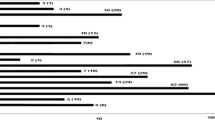Abstract
In the European Union (EU), waste management is almost totally regulated by EU directives, which supply a framework for national regulations. The main target in view of sustainability is the prevention of direct disposal of reactive waste in landfills. The tools to comply with these principles are recycling and material recovery as well as waste incineration with energy recovery for final inertization. The adaptation of the principles laid down in EU directives is an ongoing process. A number of countries have already enacted respective national regulations and their realization shows that recycling and incineration are not in competition but are both essential parts of integrated waste management systems. In the EU, the amount of residual waste available for energy recovery can supply approximately 1% of the primary energy demand. About 50% of the energy inventory of municipal solid waste (MSW) in most EU countries is of biogenic origin, and MSW is to the same extent to be looked upon as regenerative fuel. Hence part of the CO2 released from waste incineration is climate neutral. In the EU, this share could produce savings of the order of 1% of annual CO2 emissions if energy from MSW replaced that derived from fossil fuel.
Similar content being viewed by others
References
US EPA (2007) Milestones in garbage. www.epa.gov/epaoswer/non-hw/muncpl/timeline_alt.htm
Barbalace K (2003) The History of Waste. EnvironmentalChemistry.com. http://EnvironmentalChemistry.com/yogi/environmental/wastehisory.html
H Frilling O Mischer (1994) Pütt und Pann'n – Geschichte der Hamburger Hausmüllbeseitigung Ergebnisse Verlag Hamburg
de Fodor E (1911) Elektrizität aus Kehrricht. K.U.K. Hofbuchhandlung von Julius Benkö, Budapest
Zwahr H (1996) 100 Jahre thermische Müllverwertung in Deutschland. VGB Kraftwerkstechnik 76:126–132
European Parliament and Council (2006) Directive 2006/12/EC of the European Parliament and Council of 5 April 2006 on waste. Official Journal of the European Union, 27.4.2006, L114/9
European Council (1999) Council Directive 1999/31/EC of 26 April 1999 on the landfill of waste. Official Journal of the European Communities, 16.7.199, L182
European Committee for Standardisation (1999) Compliance test for leaching of granular waste materials and sludges. CEN-test EN 12457-3, Brussels
European Parliament and Council (2000) Directive 2000/76/EC of the European Parliament and of the Council of 4 December 2000 on the incineration of waste. Official Journal of the European Communities, 28.12.2000, L332/91 Amendment: Council Decision 2003/33/EC of 19 December 2002 establishing criteria and procedures for the acceptance of waste at landfills pursuant to Article 16 of and Annex II to Directive 1999/31/EC. Official Journal of the European Communities, 16.1.2003, L 11
Eurostat (2006) Waste generated and treated in Europe. http://epp.eurostat.cec.eu.int/
J Vehlow (1996) ArticleTitleSimple, reliable and yet efficient – modern strategies in waste incineration UTA Technol Environ 2 144–160
F Hasselriis (1988) ArticleTitleWhat's in our garbage? Waste Altern Waste Energy 1 74–77
InstitutionalAuthorNameEER (1993) Technical resource document on environmentally sound recovery of energy from municipal solid waste – contribution of plastics. Study for American Plastics Council Irvine CA
Kern M, Sprick W, Glorius T (2001) Regenerative Anteile in Siedlungsabfällen und Sekundärbrennstoffen. http://www.ask-eu.de/default.asp?linkid=&cmd=VIEW_ARTIKEL3597&cmd2=TOPVIEW85&keyword=
Gerlag T (2006) SenterNovem, private communication, June 2006
McGowin CR (1989) Municipal solid waste. Opportunity or problem? In: Proceedings of the 82nd A&WMA Annual Meeting vol 2. Anaheim, CA. p 19
Vehlow J (2005) Biogenic waste to energy – an overview. Bioenergy Australia 2005, Melbourne, December 12–13, 2005. Proceedings available on CD-ROM
Vehlow J (2002) Neues zum Thema Mitverbrennung oder Müllverbrennung. Schriftenreihe des Österreichischen Wasser- und Abfallwirtschaftsverbandes 151:35–46
J Vehlow H Seifert (2003) Praktische Auswirkungen der Rechtsprechung des EuGH auf die Abfallwirtschaft W Klett (Eds) Wie verändert der Europäische Gerichtshof die Abfallwirtschaft in Deutschland? Gutke-Verlag Köln 169
CIA (2007) World factbook. https://www.cia
B Johnke M Treder (2004) Waste management, energy use and reduction of greenhouse gas emissions ICIPEC Conference Hangzhou, China
Author information
Authors and Affiliations
Corresponding author
Rights and permissions
About this article
Cite this article
Vehlow, J., Bergfeldt, B., Visser, R. et al. European Union waste management strategy and the importance of biogenic waste. J Mater Cycles Waste Manag 9, 130–139 (2007). https://doi.org/10.1007/s10163-007-0178-9
Received:
Accepted:
Published:
Issue Date:
DOI: https://doi.org/10.1007/s10163-007-0178-9




